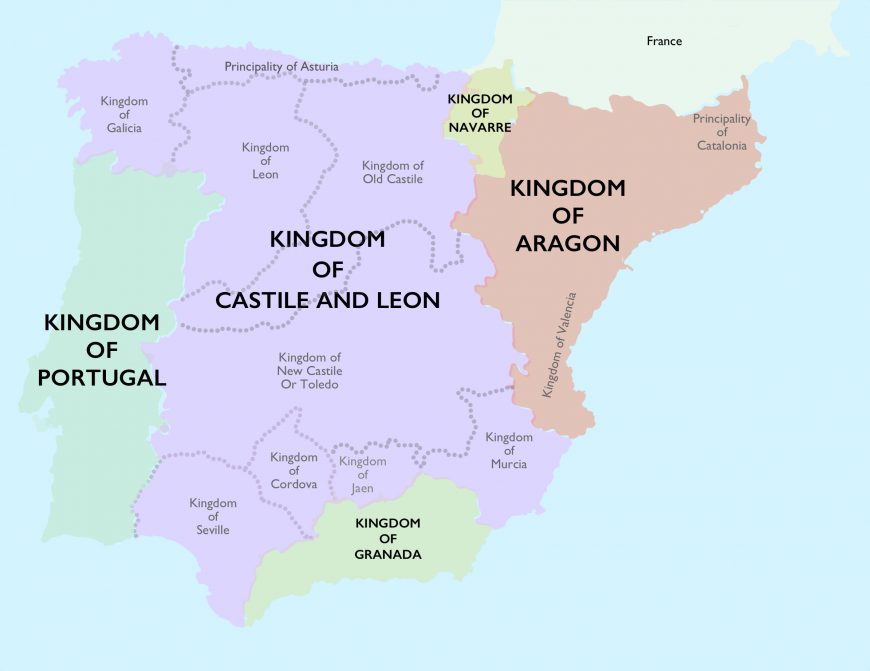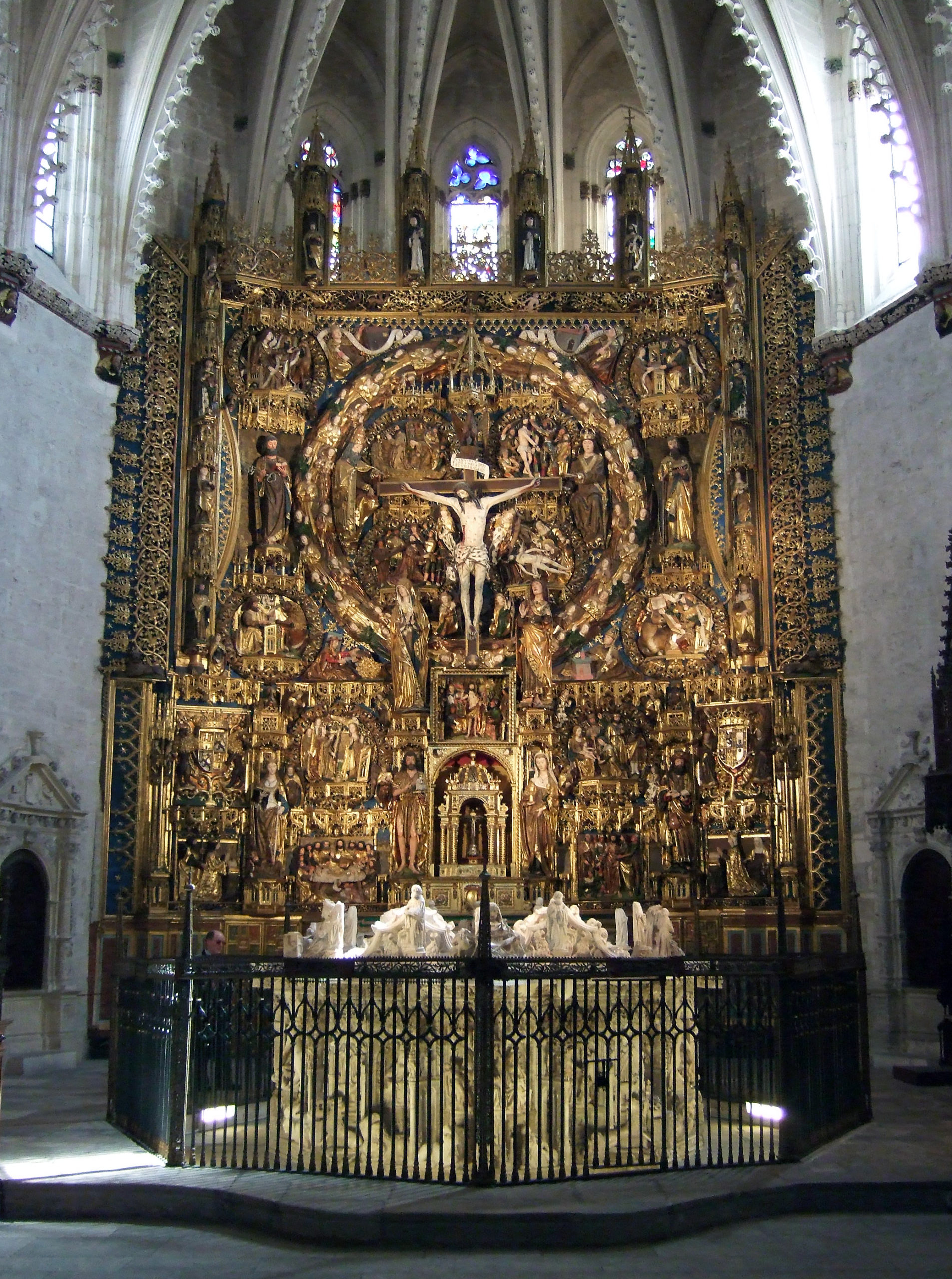
The Tomb of Juan II of Castile and Isabel of Portugal in front of the altar of the church of the Carthusian Monastery of Miraflores (photo: Ecelan, CC BY-SA 4.0)
If you suddenly found yourself heir to a throne, one that your family members felt belonged to them, what steps would you take to advertise that you are indeed the rightful inheritor? In 1486, Queen Isabel of Castile found herself in just this position. And she needed to communicate to her subjects that she was the rightful heir to the royal throne. One way she did this was to commission the sculptor Gil de Siloé to create an elaborate star-shaped tomb in honor of her parents, to be placed before the main altar in the Carthusian Monastery of Miraflores (near Burgos) in Spain.
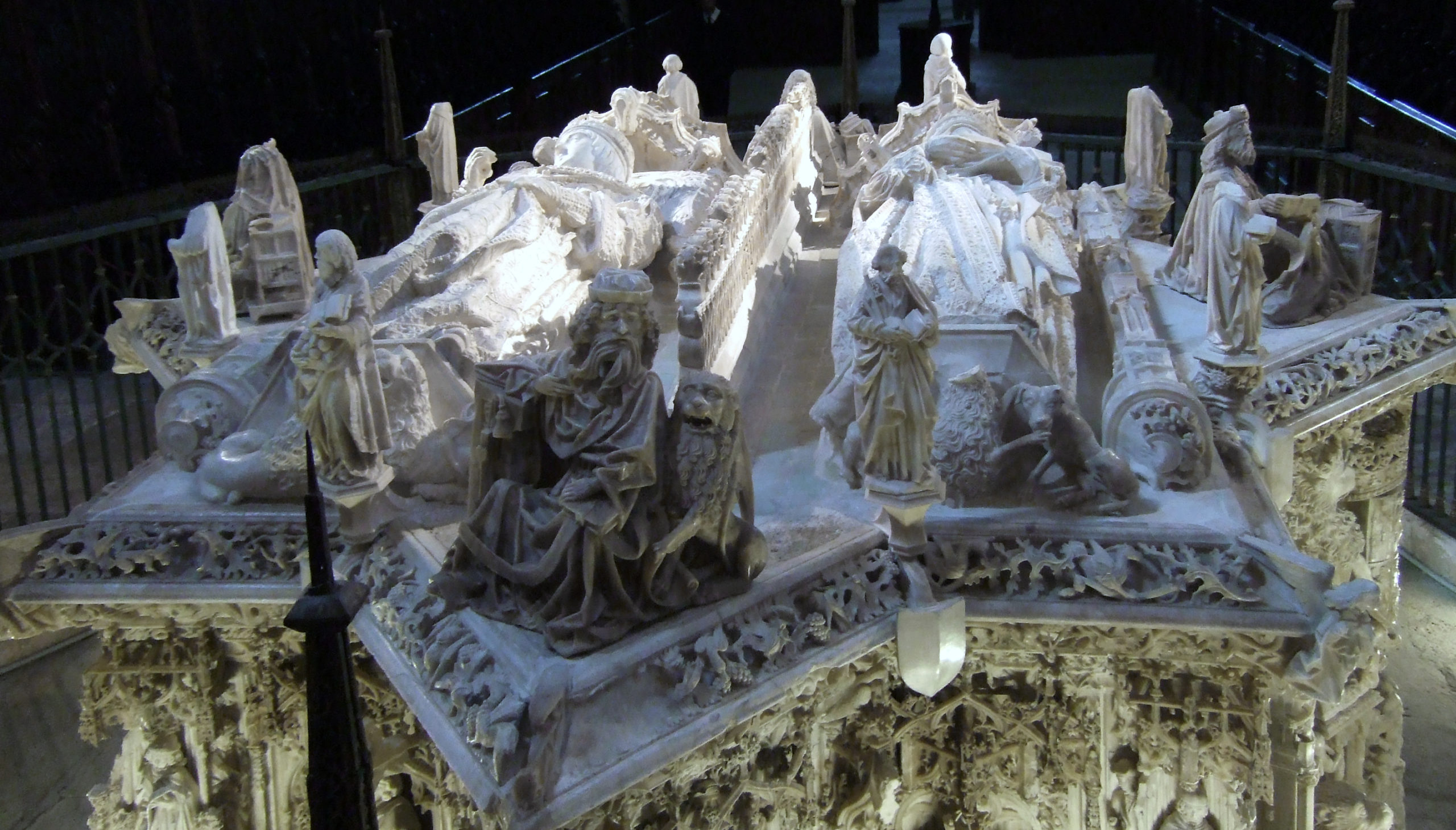
Gil de Siloé, The Tomb of Juan II of Castile and Isabel of Portugal, 1489–93, alabaster (photo: Ecelan, CC BY-SA 4.0)
The impressive and ornate tomb is made entirely of alabaster, which was admired for its translucency and desired for the ease with which one could carve it. The elaborate tomb was not created solely as a commemorative monument though. Isabel also intended to make a political statement about her right to rule from the throne of Castile, which some of her family members wanted for themselves.
The elaborate tomb tells us a great deal about art and artists in fifteenth-century Spain, political power struggles, patronage concerns, and the importance of alabaster as a medium in the renaissance.
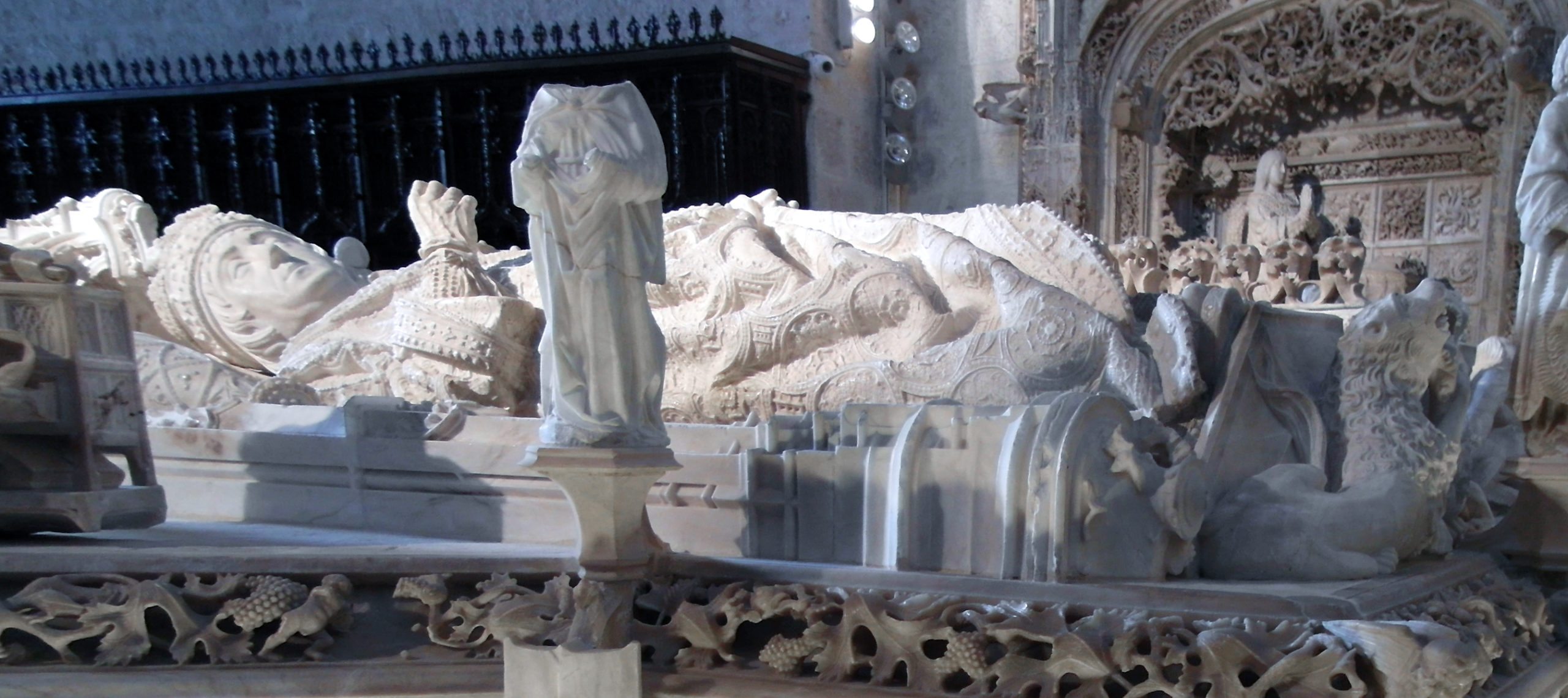
Gil de Siloé, The Tomb of Juan II of Castile and Isabel of Portugal, detail of Juan II of Castile, 1489–93, alabaster (photo: Rowanwindwhistler, CC BY-SA 3.0)
The tomb
The ambitious tomb was a massive monument that was arranged as an eight-pointed, star-shaped platform. On top of the platform rested two life-sized effigies of Juan II of Castile and Isabel of Portugal, the parents of Queen Isabel. Lions rest at their feet. These felines are commonly found on royal or noble tombs of this time. As strong animals, lions symbolized power and also served as protectors. Isabel holds a prayer book, a sign of her piety. Juan II raises his right hand, while his left hand pulls on his robe, allowing Gil de Siloé to flaunt his skill at creating naturalistic folds in clothing. Above them are elaborate canopies and to their side are slim colonnettes, both of which make the two figures appear as if they are on a church facade rather than reclining on a tomb.
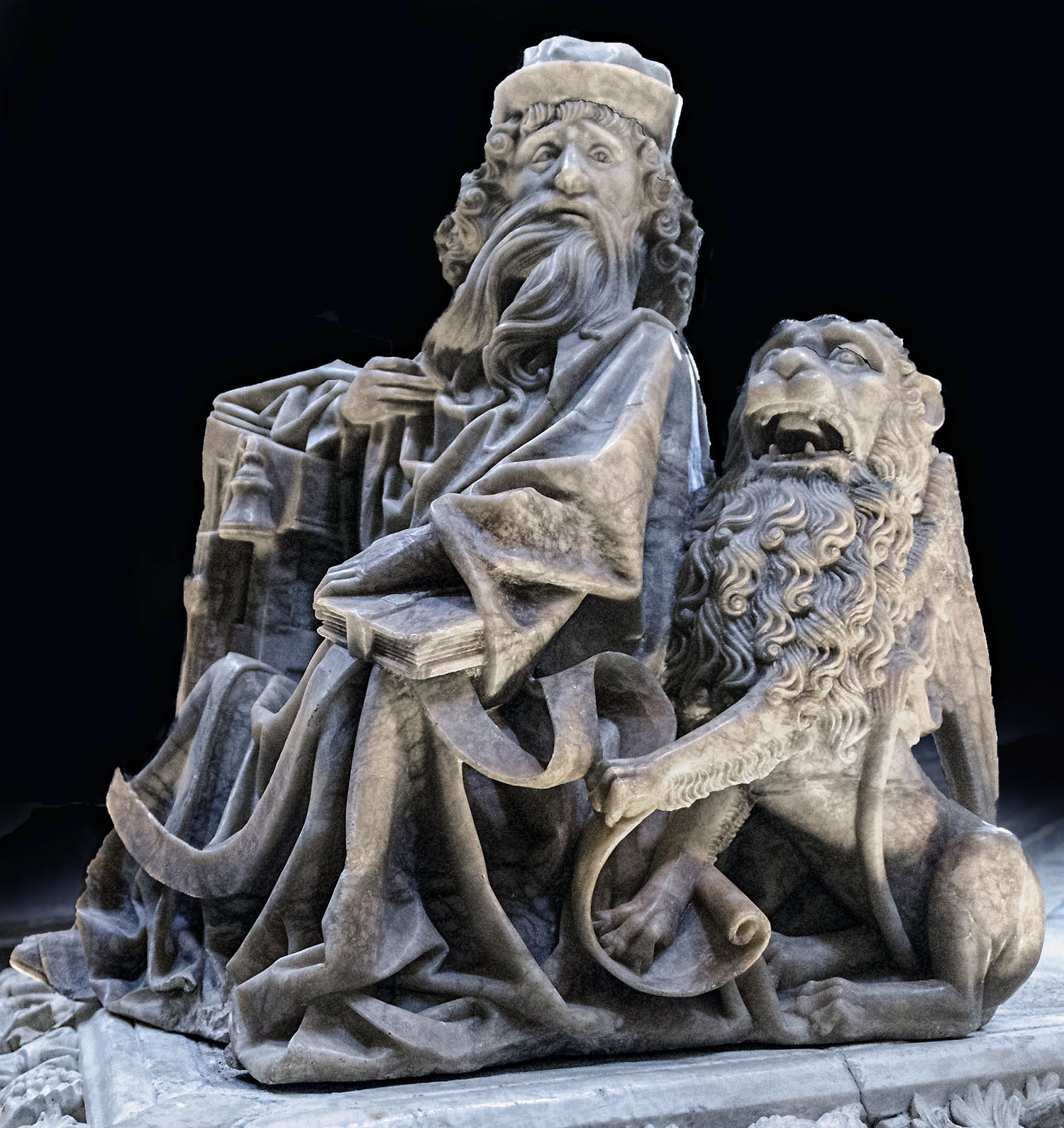
Gil de Siloé, The Tomb of Juan II of Castile and Isabel of Portugal, detail of St. Mark, 1489–93, alabaster (photo: Ángel M. Felicísimo, CC BY-SA 3.0)
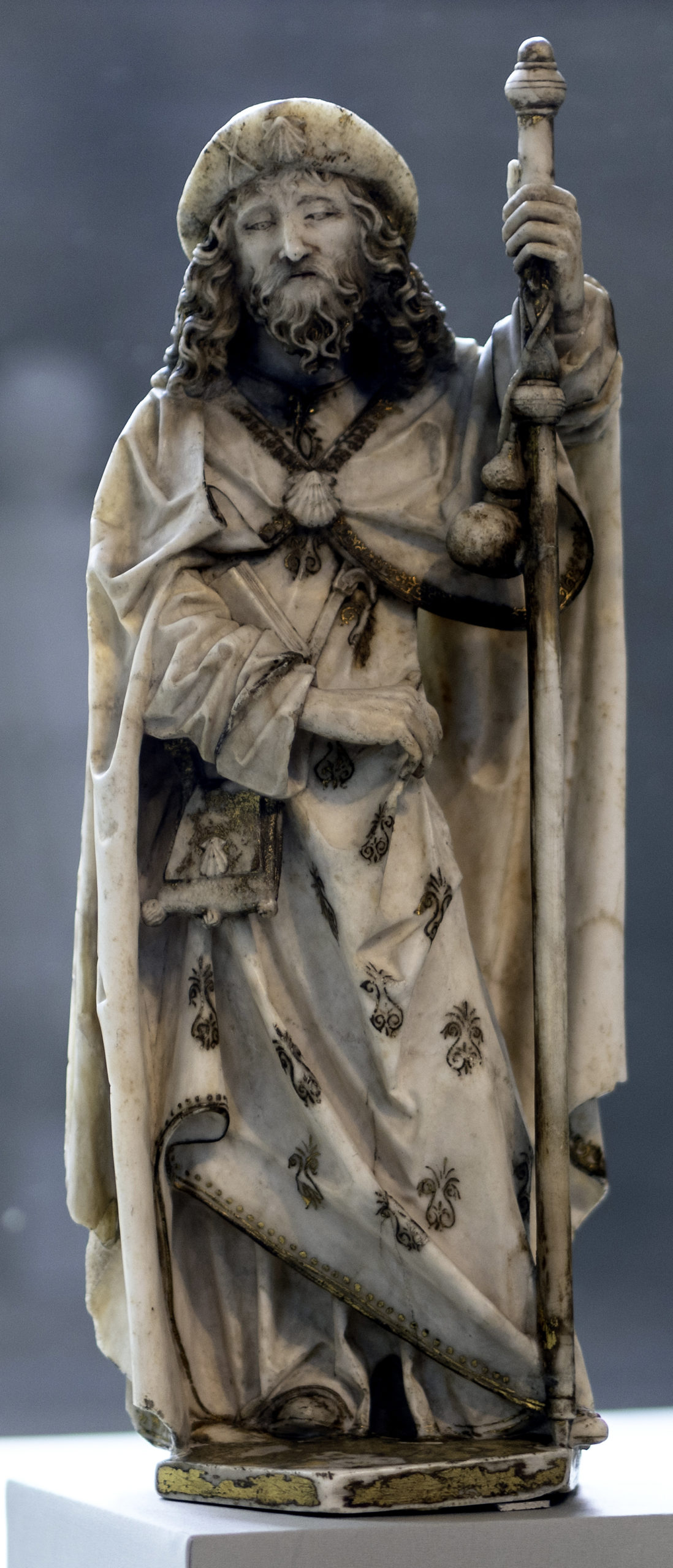
Gil de Siloé, St. James the Greater, from the Tomb of Juan II of Castile and Isabel of Portugal, 1489–93, alabaster (The Cloisters, The Metropolitan Museum of Art; photo: Steven Zucker, CC BY-NC-SA 2.0)
Surrounding the royal couple are smaller figures of the four Evangelists, seated at the four cardinal directions. The twelve apostles of Jesus are also atop the platform. One of the original apostles was removed, and is now in the Cloisters Museum of Art in New York City, with a replica on the tomb itself. It is an important reminder that artworks are often modified over time, attesting to their ongoing lives after their moment of creation.
Below the royal effigies are Old Testament figures (no longer in their original arrangement), who literally support the figures above them. Lions also adorn the sides, protecting the Castilian coats of arms. Many of the figures here also rest between delicate colonettes, adding to the architectural quality of the tomb.
The monument is a visual feast for the eyes. The sculptor created a complex surface design with an abundance of details, all done with a delicacy that makes the tomb appear more like a work done in metal than in stone. Elaborate tracery (ornamental stone openwork) animates much of the tomb. The clothing of the life-sized figures has a rich surface design and naturalistic texture, as if Gil de Siloé wanted to capture the sense of silks and brocades in stone.
Other naturalistic details can be found throughout the monument, such as the faces and hair of the royal couple, and the way that fabrics hang on the bodies of the figures. Juan II’s skin shows signs of aging, with slightly sagging jowls, which adds to the portrait-like quality of the effigies. The interest in detailed surface texture and naturalistic details parallels what we find in Spanish and Flemish painting of the time.
Flemish art and artists (in Northern Europe), among them Gil de Siloé, found a home on the Iberian peninsula in the fifteenth century, adding to the complex visual culture we find there. The tomb’s appearance has also been compared to Mudéjar art (Christian art heavily influenced by Islamic art), specifically for its heavy patterning and rhythmic repetition of complex forms.
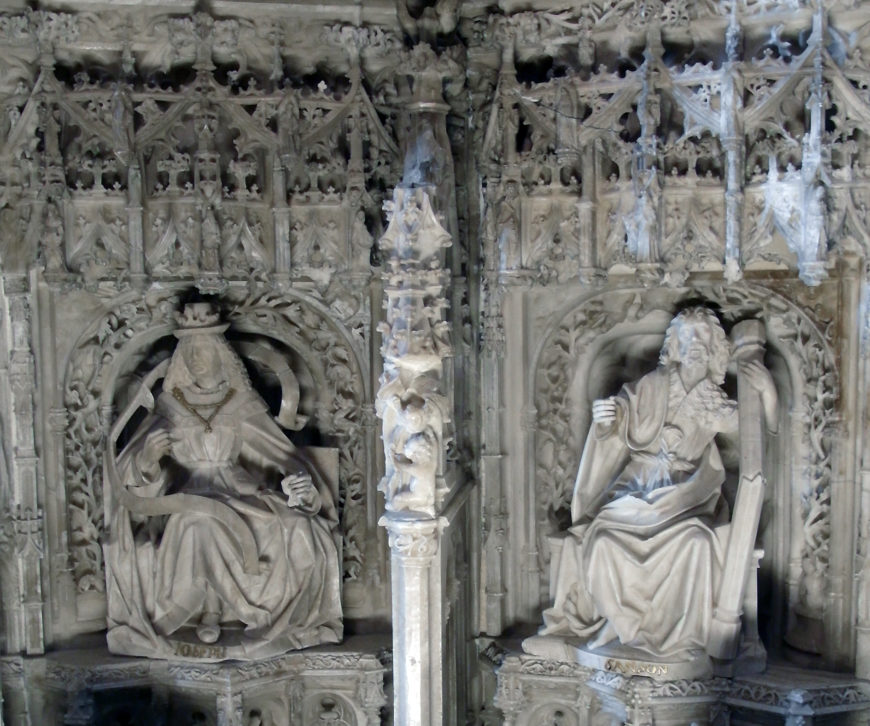
Gil de Siloé, The Tomb of Juan II of Castile and Isabel of Portugal, detail of Joseph and Samson, 1489–93, alabaster (photo: Rowanwindwhistler, CC BY-SA 3.0)
Stylistically, scholars have labeled this tomb as late Gothic or as Isabelline, although it falls within the era of the early renaissance in northern Europe and Italy—places where we still find the influence of Gothic art as well. The term Isabelline is one more frequently attached to architecture created during the reign of Isabel and Ferdinand of Aragon, her husband. The so-called Isabelline style is one that borrows from Islamic or Mudéjar traditions, northern European styles, some classicizing forms, and even complex silverwork designs. The many ways that we might label the tomb’s style speaks to some of the challenges that art historians face when naming things, especially when these terms were created to describe art in other places.
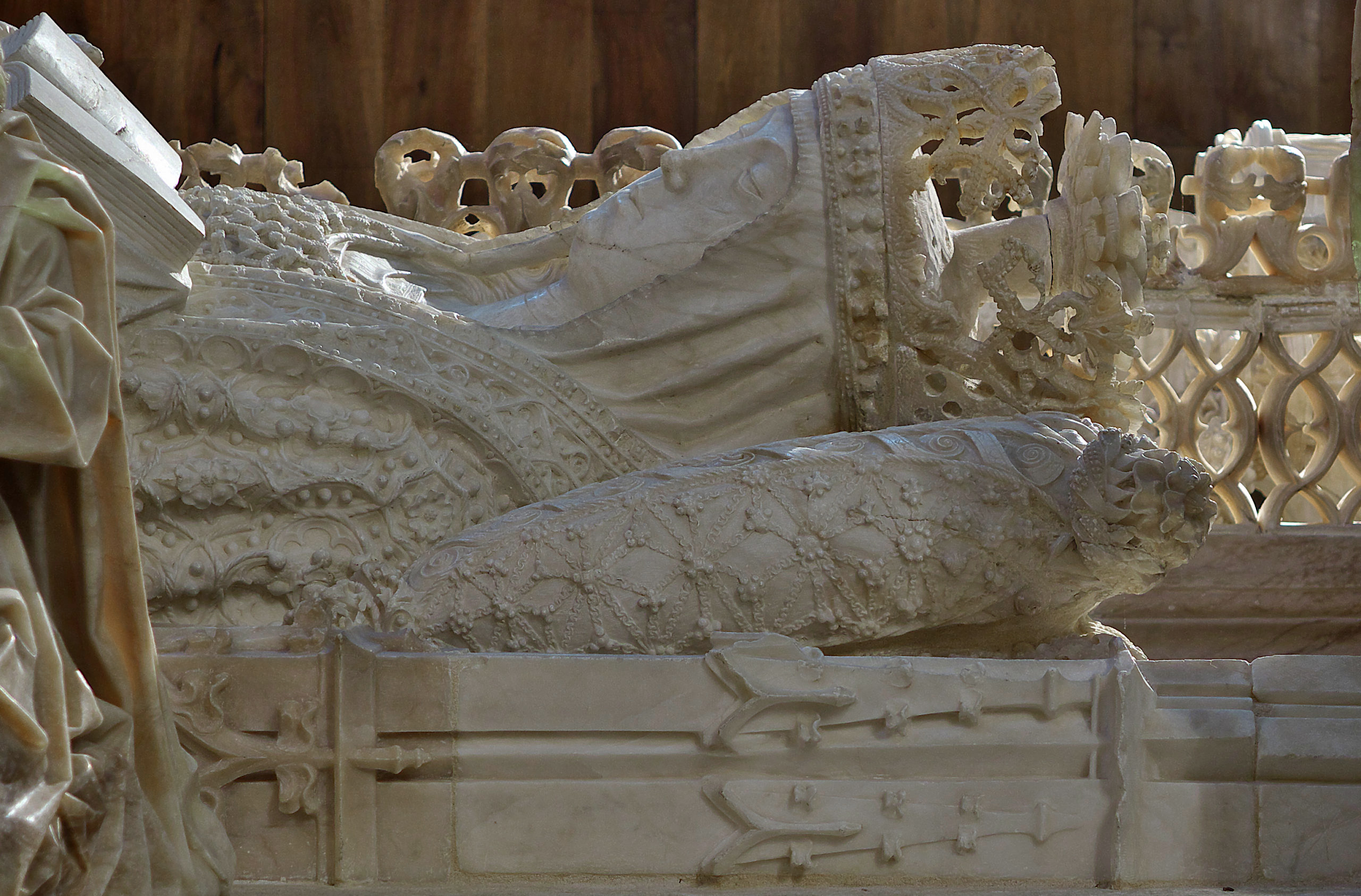
Gil de Siloé, The Tomb of Juan II of Castile and Isabel of Portugal, detail of Isabel of Portugal, 1489–93, alabaster (photo: Jose Luis Filpo Cabana, CC BY 3.0)
The material
Often when we think of sculpture from the fifteenth or sixteenth centuries, we think of marble and bronze sculptures, or perhaps wooden ones. Alabaster was also a common medium in which many sculptors created dazzling objects, such as the tomb of Juan II and Isabel of Portugal. Alabaster became popular as a material for altars and tombs beginning in the late Middle Ages in Spain, the Burgundian Netherlands, and England. It was frequently painted and gilded, and there are traces of paint and gold on Siloé’s sculpture. Unpainted, alabaster can range in color from white to pink to yellow, and can have streaks in it as well, as we can clearly see in the figure of St. Luke on the tomb.
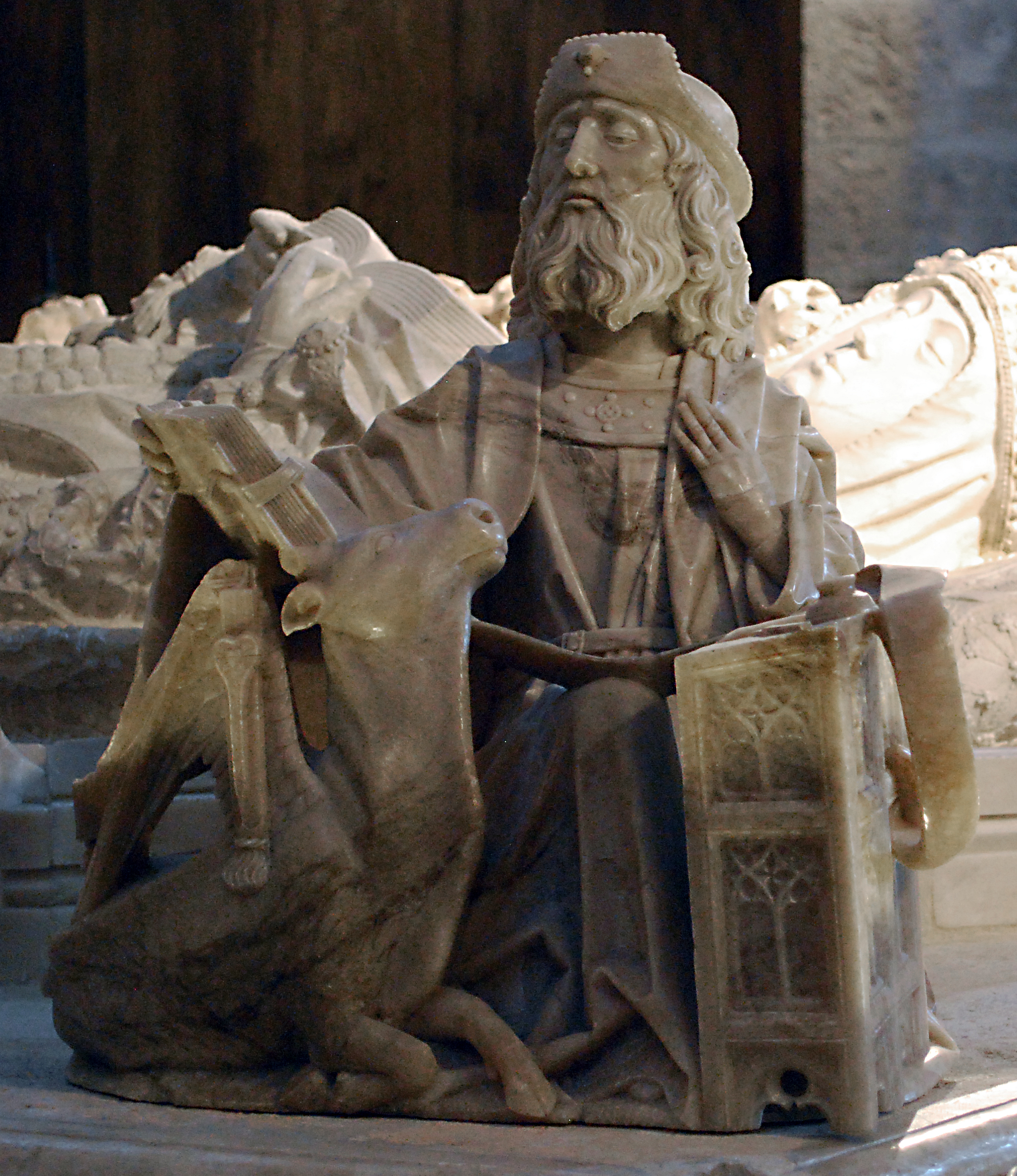
Gil de Siloé, The Tomb of Juan II of Castile and Isabel of Portugal, detail of St. Luke, 1489–93, alabaster (photo: Concierge.2C, CC BY-SA 3.0)
Alabaster sculpture has been ignored in art historical scholarship, with preference given to marble sculpture in the renaissance. Marble was the favored stone in Italy, but not as much in other places. Alabaster appealed to people because of the ease with which one could cut and polish it, its greater luster and translucency, and its ability to take paint well with a generous coating of gesso (a mix of an animal glue binder, chalk, and white pigment), although it did not fare well outdoors. It was soft enough that sculptors could use woodworking tools to carve it. Spain has abundant alabaster reserves, which is a main reason for the stone’s popularity in the medieval and renaissance eras. In the fifteenth century, there was no sense that alabaster was inferior to marble.
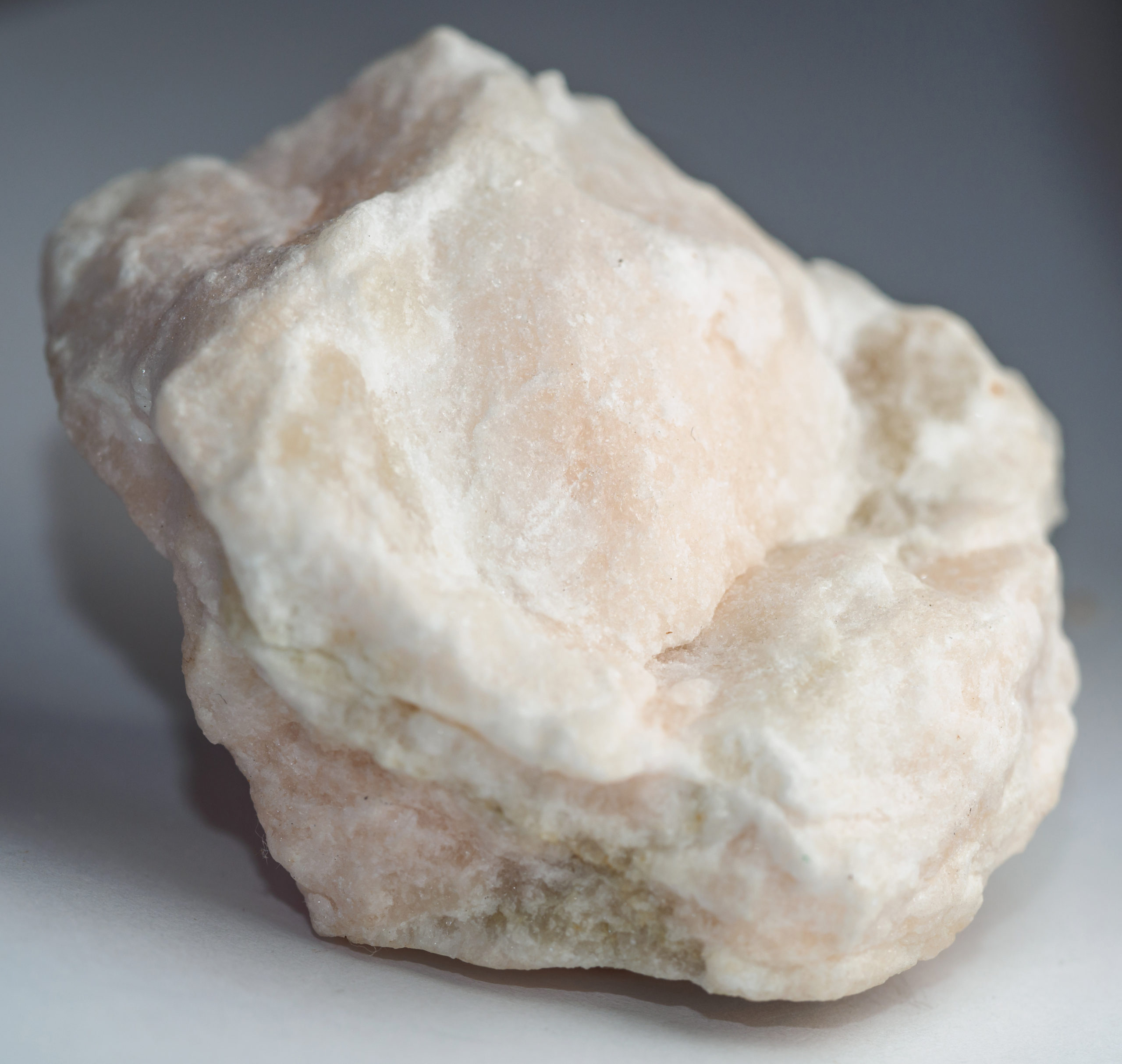
Alabaster (photo: James Petts, CC BY-SA 2.0)
The artist
Gil de Siloé originally came from northern Europe, most likely the Netherlands. Like some other artists of the fifteenth century, he traveled to Castile, presumably to find work. While in Spain, he was one of the best sculptors of his day. While he sculpted in various media, his alabaster works are among the finest. His skill with the tools of his trade did not go unnoticed; he had a number of important patrons, including Isabel.
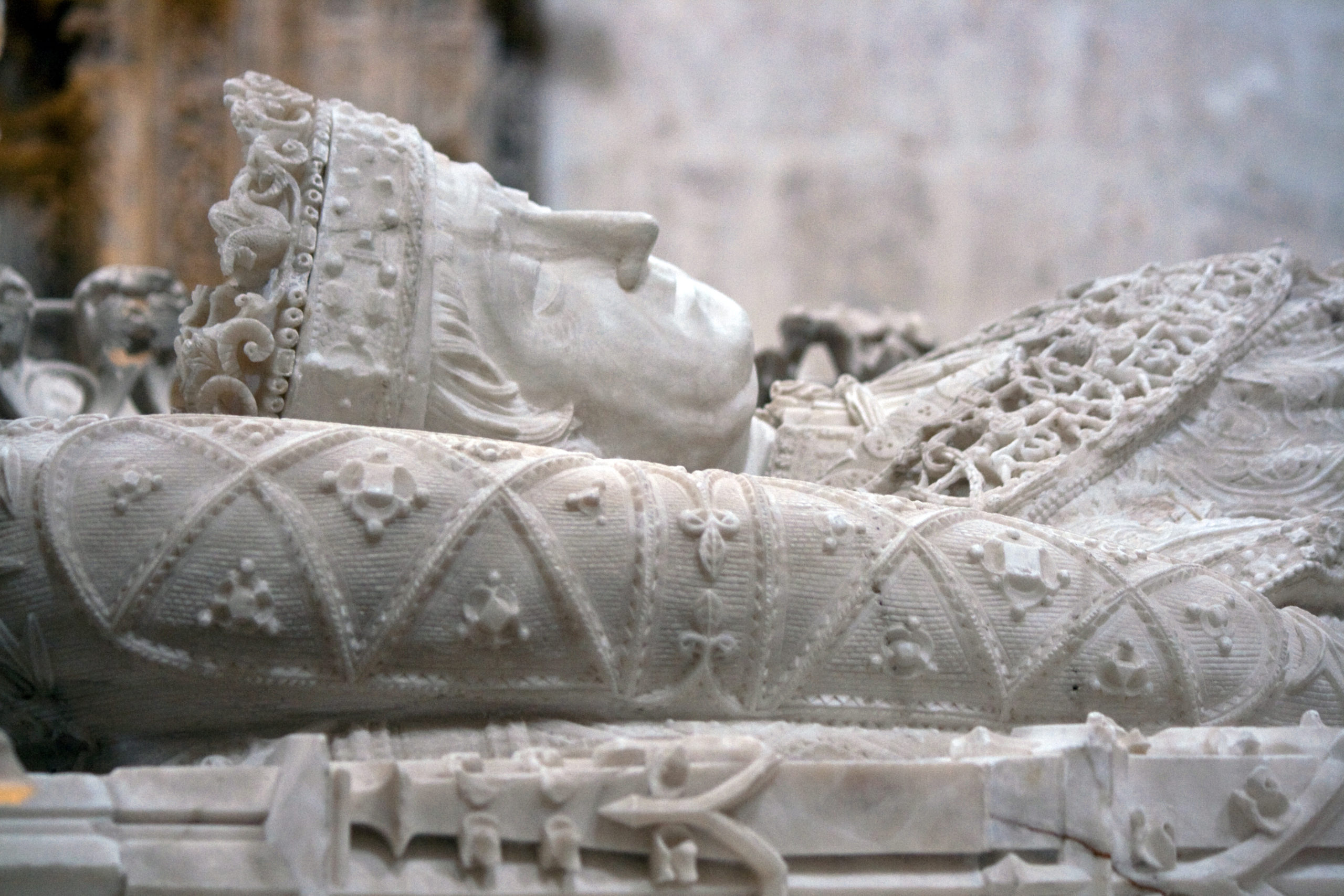
Gil de Siloé, The Tomb of Juan II of Castile and Isabel of Portugal, detail of Juan II of Castile, 1489–93, alabaster (photo: Pylaryx, CC BY-SA 4.0)
The patron and the commission
For this tomb, Gil de Siloé found himself a royal patron in the figure of Queen Isabel of Castile. Isabel had a fondness for northern art, likely due to her father’s interest in it as well. Her official court painter in the late fifteenth century was Juan de Flandes, or John of Flanders, and she had a number of other northern artists work for her during her life, including Gil de Siloé.
After Isabel commissioned her parents’ tomb from Gil de Siloé, he sculpted it between 1489 and 1493. Isabel had good reason to want to showcase her parents in such an elaborate tomb. It commemorates Juan and his second wife (Isabel’s mother), which was important because Isabel’s accession to the throne depended on her legitimate royal lineage. The tomb functions like a large advertisement noting her dynastic claims to the throne for anyone who called them into doubt. Juan II of Castile had also donated his hunting lodge to the Carthusians in 1442, at which point it was transformed into a monastery. Having Gil de Siloé place a tomb in this location reminded people of Juan II’s donation, which Isabel felt would aid her in further legitimizing her rule.
This singular monument reveals so much to us about late fifteenth-century Spanish art and the important role that it could play in political maneuverings. It also helps us to think beyond the borders of what we traditionally think of as “renaissance sculpture.”
Additional resources:
Gil de Siloé’s sculpture of St. James the Greater at The Metropolitan Museum of Art
Watch a video about a sculpture that was removed from the tomb
Read more about fifteenth-century Spanish painting on Smarthistory
John F. Moffit, The Arts in Spain (London: Thames and Hudson, 1999).
Judith Berg Sobreé, The Artistic Splendor of the Spanish Kingdoms: The Art of Fifteenth-Century Spain (Boston: Isabella Stewart Gardner Museum, 1996).
Alberto Velasco and Francesc Fité, eds., Late Gothic Painting in the Crown of Aragon and Hispanic Kingdoms (Leiden: Brill, 2018).

